A customer education program can bring numerous benefits to your SaaS company.
Simply put, you can get more satisfied customers who can use your product to its full potential, turning them into long-term users that will stay loyal, bring recurring revenue, and spread the word about your brand.
Therefore, every company that develops software should invest in education and remove the roadblocks that prevent customers from using its products to the fullest.
That’s why we compiled some tips for building a great customer education program. Ready for the first one?
Let’s get started!
Learn What Your Customers’ Pain Points Are
When you’re building a customer education program, it should go without saying that you want it to be as helpful as possible.
After all, one of the main purposes of customer education is to teach customers how to use your product to solve their problems and satisfy their needs.
But to maximize the helpfulness of your educational content, you need to focus on your customers’ pain points.
What are pain points? Simply put, they are specific problems a customer can encounter while using a product.
Perhaps customers have a problem with some of your features or the price of the product, or they aren’t happy with the customer support.
Those are all pain points you should learn about so you can focus on creating more educational content that addresses them.
As Monica Green Boydston, former Head of Epicor Learning, summed up, that focus is essential for better educational efforts.
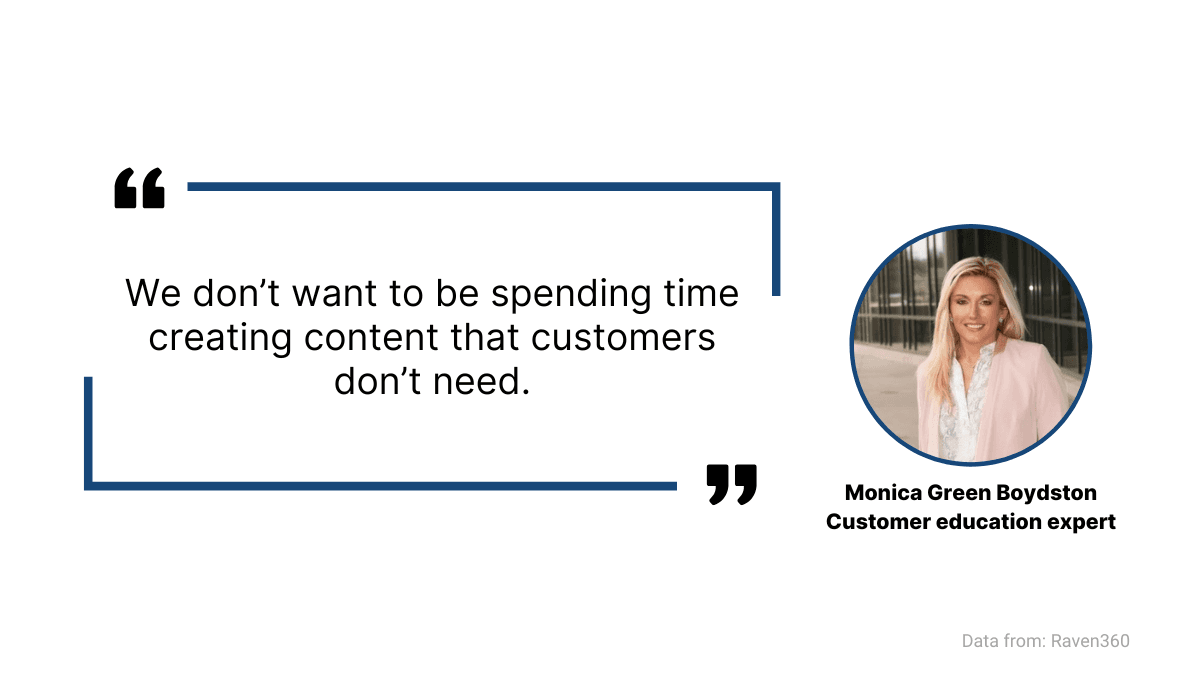
Source: Archbee
So, how can you find out what your customers’ pain points are?
One straightforward way is to ask them.
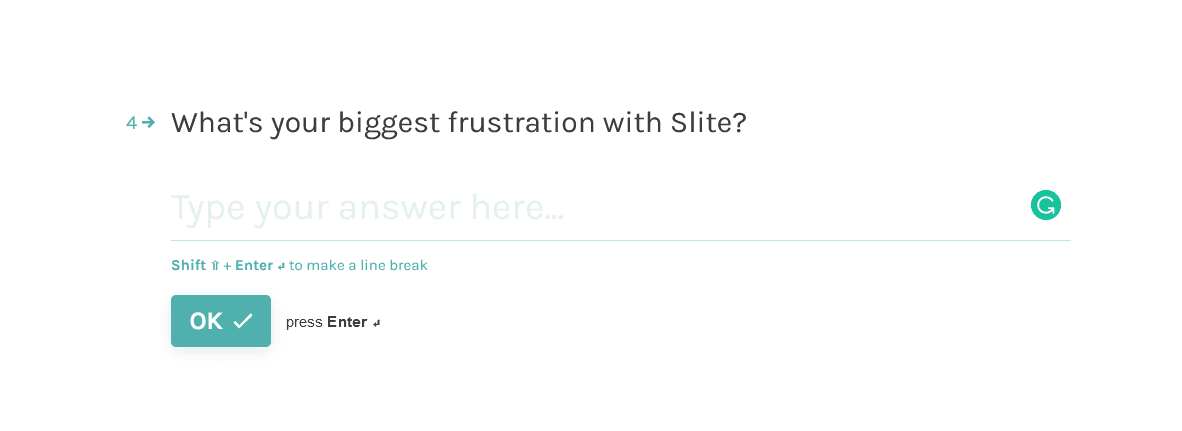
Source: Slite
Above, you can see a part of the survey Slite sends to new users.
They ask the customer directly what they struggle with most while using their product.
That kind of question can be very useful because it focuses on collecting qualitative instead of quantitative data, which focuses on yes/no questions and rating scales.
Quantitative data has its purpose too, but gathering and using detailed customer answers is much more valuable for uncovering pain points.
Send Out a Series of Onboarding Emails
Onboarding is a part of every proper customer education program.
Showing customers how to use the essential features of your product and quickly gain value from them is crucial.
It helps them get accustomed to the product, use it independently, and realize it’s the right solution for them.
That being said, you can design onboarding in various ways, and one of the most effective and convenient of them is to create a series of onboarding emails.
Why is it effective? Because you can showcase the most prominent features of your product in your email, illustrate them with visuals, or simply link to your website and more resources.
And convenient? That’s because it takes very little effort on your customers’ part. All they have to do is open the emails and follow along.
Let’s take a look at how Airtable onboards its customers through emails.
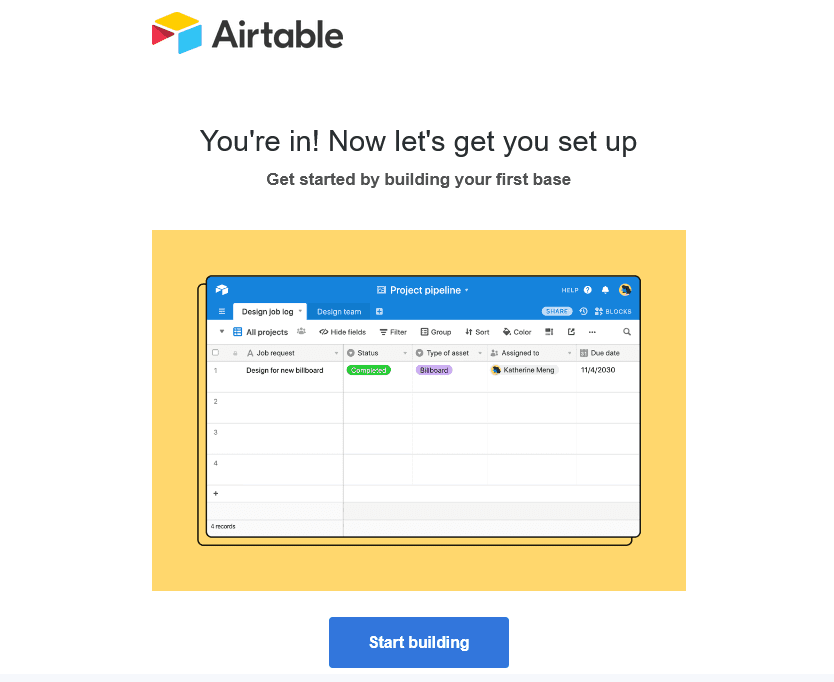
Source: Gmail
As you can see above, the first email immediately encourages customers to start using the product by building their first base.
In addition to that, the Airtable team puts in several other links for other notable features like templates, importing files, etc.
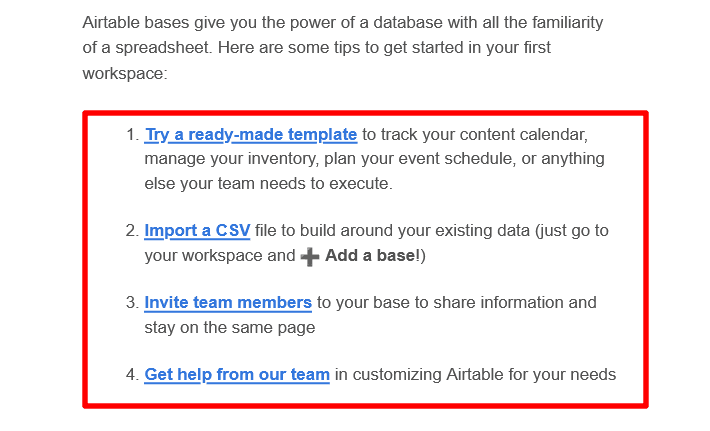
Source: Gmail
Over the next few days, they continue to send onboarding emails to new customers.
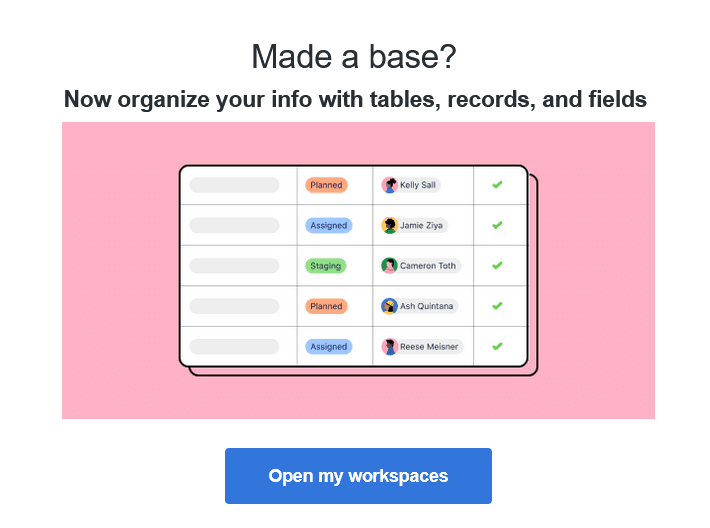
Source: Gmail
Providing your customers with helpful content in their inboxes is a great way to organize customer education.
You can control their onboarding journey, point out the features you have determined to be the most useful for them, and present them with your product in the way you prefer.
Use Your Company’s Blog to Educate
Blogging can be a very potent tool for educating your customers if you know how to use it to your advantage.
You can use your company’s blog to share educational information with your customers, instructing them on how to use your product.
Let’s look at the example from HubSpot.
One of the articles from their company blog explains how to create an outstanding marketing plan.
Since HubSpot’s customers are most likely very interested in various topics regarding marketing, sales, and customer experience, the content in that blog article appeals to them.
Furthermore, since HubSpot offers tools that help with all those activities, a topic like creating a marketing plan is excellent for educating existing and potential customers about such tools.
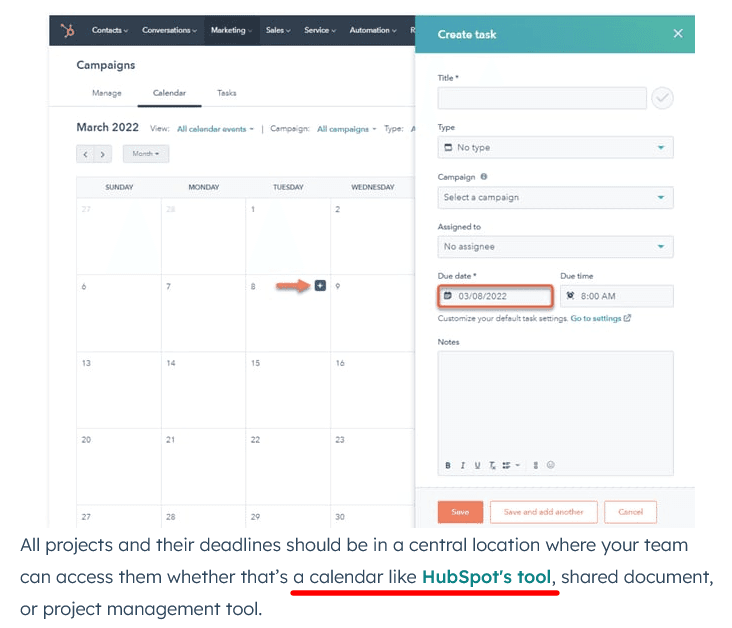
Source: HubSpot
As you can see above, the writer did precisely that—presented one of HubSpot’s tools as helpful for creating a marketing plan.
Also, after they provide educational content in the article, they encourage readers to download a free template and get one step closer to becoming paying customers.
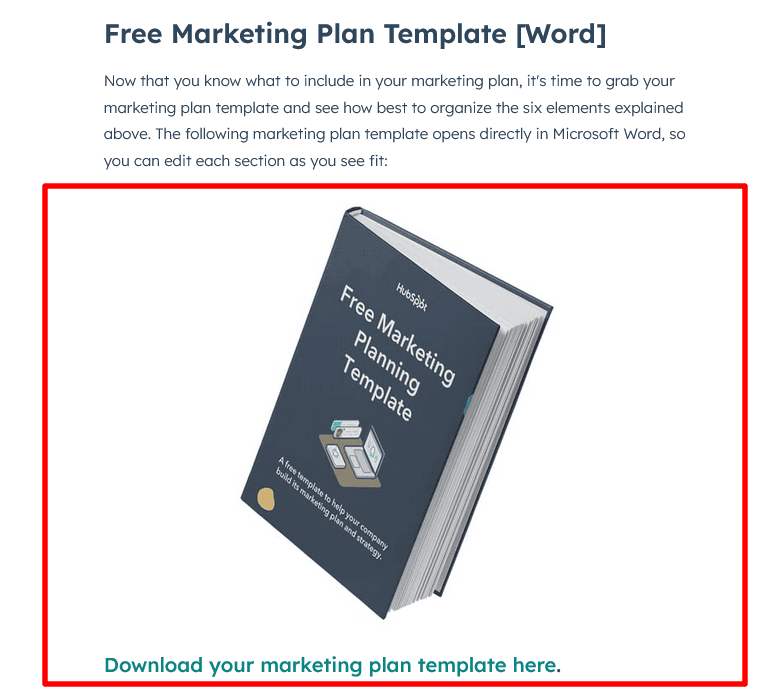
Source: HubSpot
However, it’s important to keep in mind that educational content should be at the center of blog articles instead of marketing efforts.
If you’re too pushy, you could drive customers away.
Instead, by providing them with valuable content they’re interested in, you establish your company as an authority, making the customers more inclined to buy your products.
Create In-Product Walkthroughs
One of the most efficient ways to educate your customers is to show them the value and functionality of your product within the product itself.
That’s why you should create in-product walkthroughs, as they can be very beneficial for your customers.
Customers get an interactive and engaging experience of seeing the product in action while the necessary information is displayed to them on the screen.
The goal of this experience is to lead customers to realize the value of the product and the ways they can use it for their needs.
And engagement drives product adoption. As Rand Fishkin, one of the leading SEO experts, puts it, customers are willing to pay for engaging content.
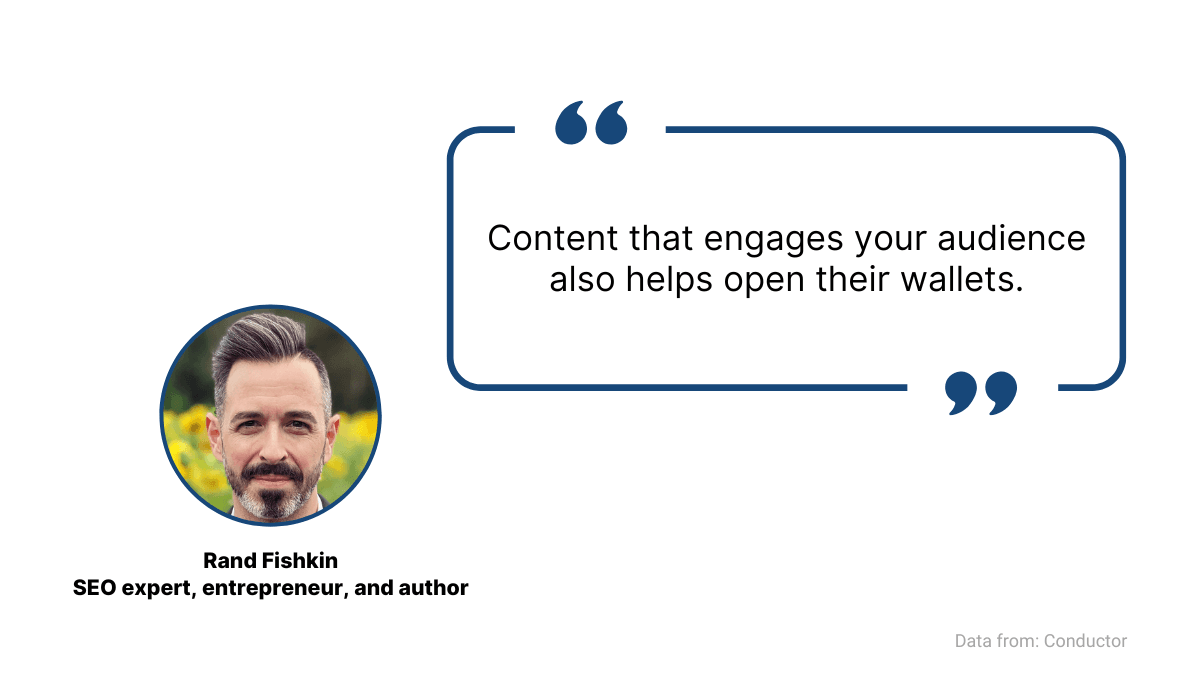
Source: Archbee
In-product walkthroughs can be very simple and concise, and still efficiently deliver valuable information to customers.
For instance, tooltips are excellent for showing helpful content in the product’s user interface.
You can see that in the example from Facebook Ads below.
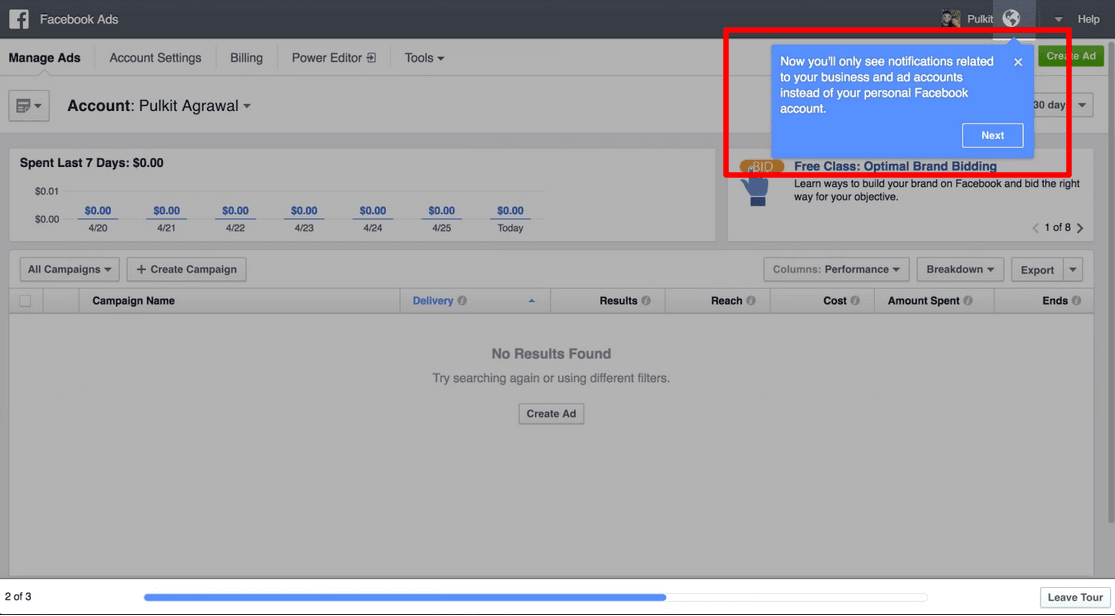
Source: Chameleon
That tooltip is a part of a three-step guide through the Facebook Ads interface.
The purpose of an in-product walkthrough is to engage the users with actionable advice and present them with your product’s value.
Small bits of helpful information like the one you can see above are ideally suited for that purpose.
Create Video Tutorials for Your Customers
Video tutorials are an indispensable part of an excellent customer education program, since that is a great medium for presenting a large amount of information in little time.
It’s a very efficient way to educate your customers thanks to the simple fact that they can see every instruction you give them instead of just reading a wordy description in a written step-by-step tutorial.
Showing instead of telling is the main advantage of video tutorials, so you should create them to maximize that advantage.
You can do that by creating screencasts, videos showing a screen recording with narration over it.
For example, Dropbox has a series of video tutorials in that style, like the one below about collecting data with Dropbox Forms.
Source: Dropbox on YouTube
After a short introduction where Kelash Kumar, their VP of Product, talks about the feature, you can watch a concise tutorial that presents how it works.
You can also make more detailed, step-by-step videos with instructions for specific tasks and features.
For instance, Asana has a library of video tutorials on their website which show detailed instructions for many features, tips and tricks, starting advice, etc.
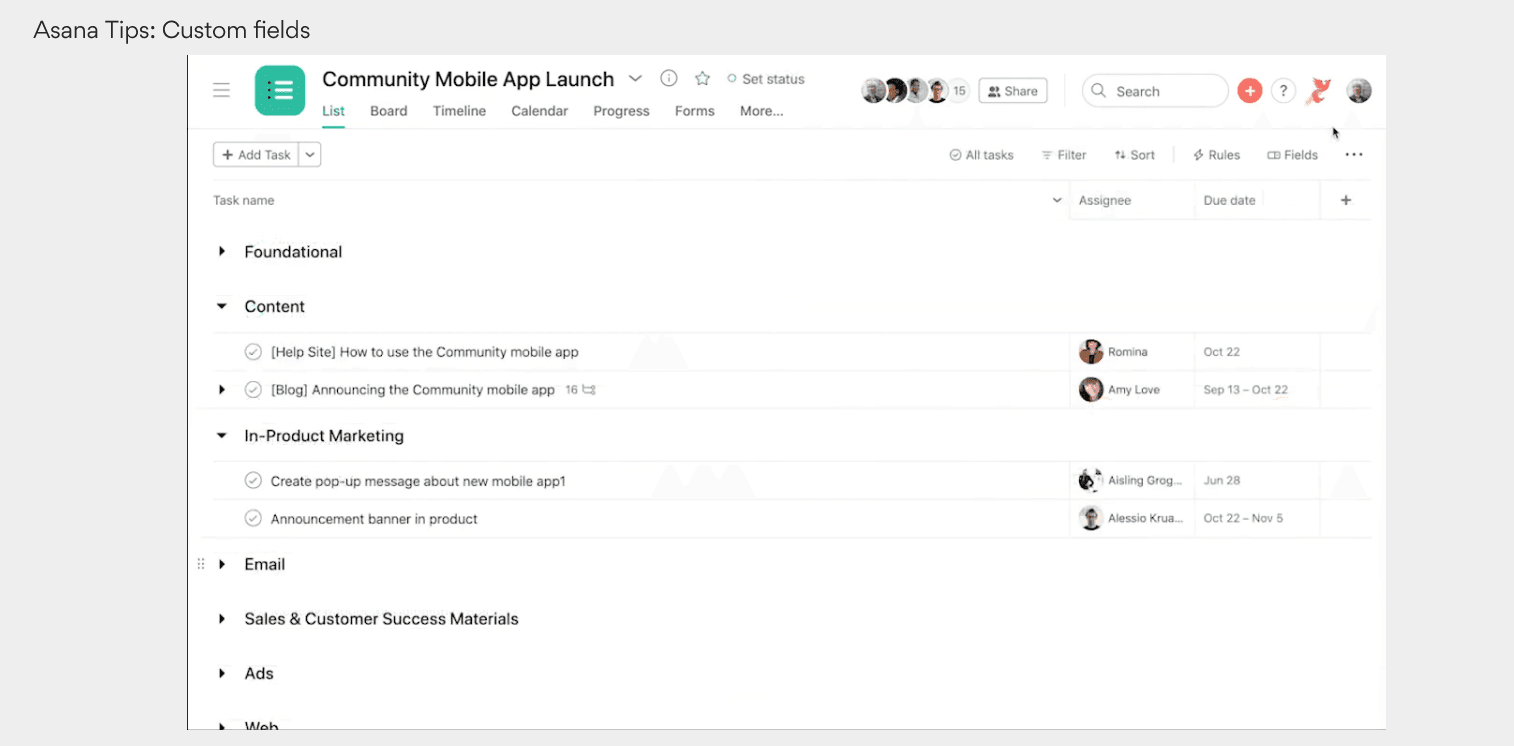
Source: Asana
The customer can watch the video and follow the instructions on the screen at their own pace, which makes learning easy.
To sum up, video tutorials are a convenient and simple way to educate your customers on any product feature.
Offer Online Courses to Your Customers
Most customers today want and appreciate flexibility in their software products.
They want to use them on their own time, at their own pace, and from multiple devices. The same goes for consuming educational materials about the product.
Online courses are a great way to provide customers with structured and comprehensive content while at the same time giving them the freedom to learn when and where it’s convenient for them.
For example, Atlassian, the provider of well-known software products like Jira, Confluence, Trello, and others you might be using, offers online courses at Atlassian University.
If you look at the reviews of their courses, flexibility is often the advantage that customers point out.
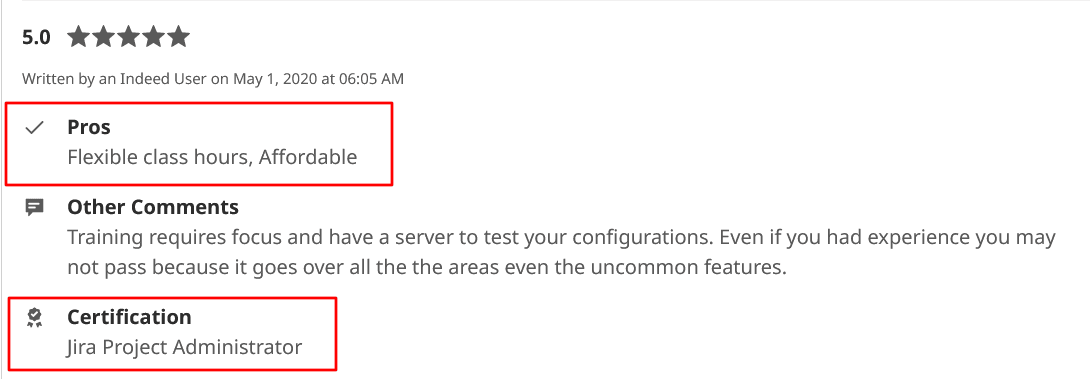
Source: Indeed
As you can see above, in addition to enjoying the flexibility, customers can also earn a certificate after completing the course.
That’s another advantage of online courses—you can personalize them for different customer segments.
In the case of Atlassian University, customers don’t just get a generic certificate regardless of the course they completed.
Depending on their needs, there are multiple learning paths and courses.
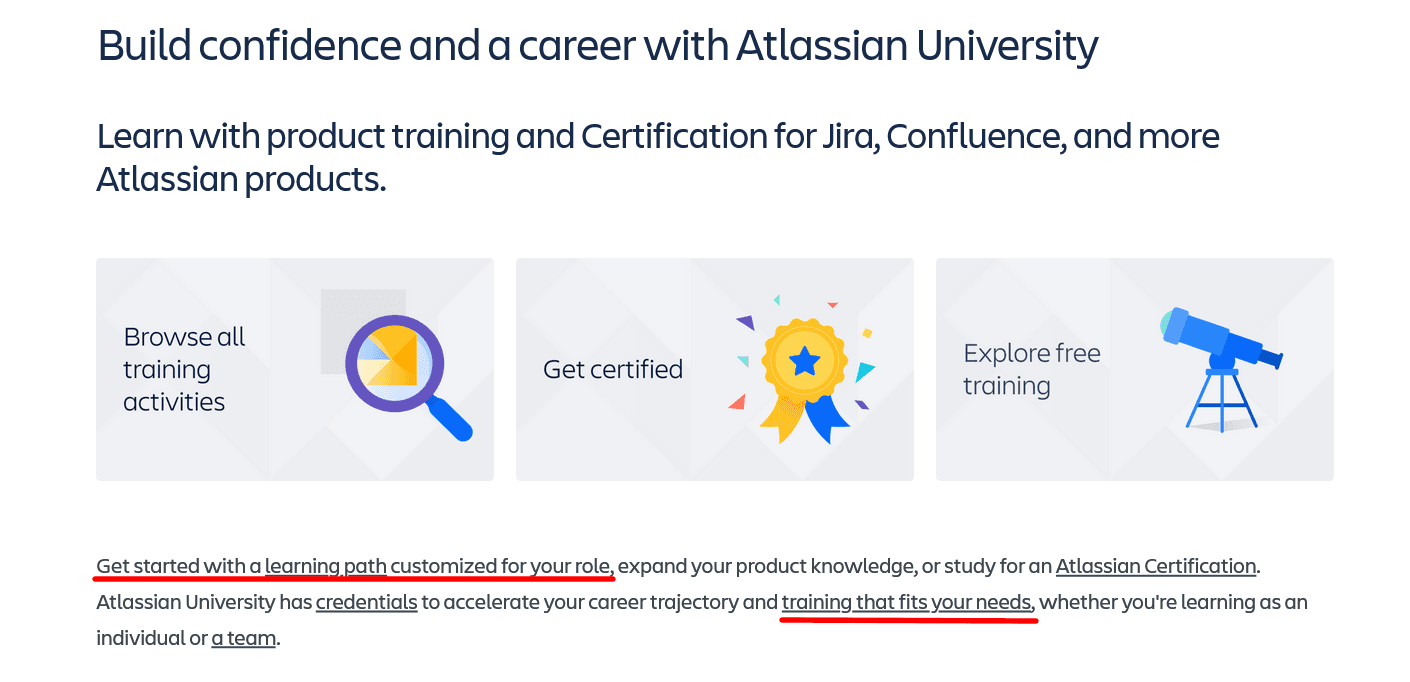
Source: Atlassian
For instance, customers can take role-based courses.
Depending on the course, they can become a Jira User, Jira Project Administrator, Confluence Administrator, etc.
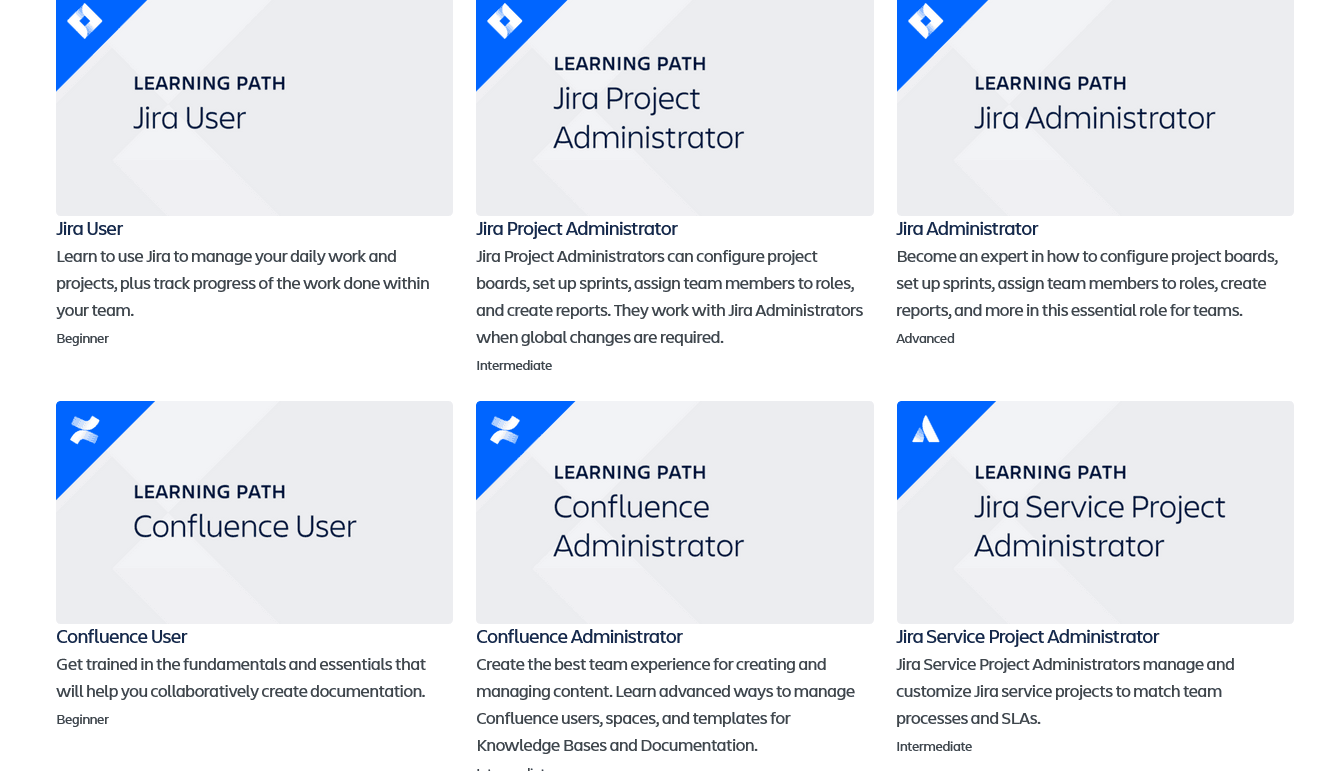
Source: Atlassian
To sum up, learning about software products should be flexible and adaptable to fit your customers’ needs.
Offering online courses is a solution you should undoubtedly consider.
Host Webinars to Educate Your Customers
Watching an expert use the product, interacting with them, and asking questions about anything you might want to know is an excellent way to learn.
That kind of learning experience should be a part of your customer education program, and you can provide it with webinars.
Webinars are practical and flexible.
Although they require customers to sign up and commit to being online at a specific time, they can usually do that from anywhere and from the device they prefer.
Furthermore, as we mentioned, they offer significant educational value.
The host is usually an expert in using the software product, who can show all the features, share tips, answer questions, and interact with customers in a way that most other educational methods can’t.
For example, Airtable offers free webinars with experts, which focus on various features of their product.
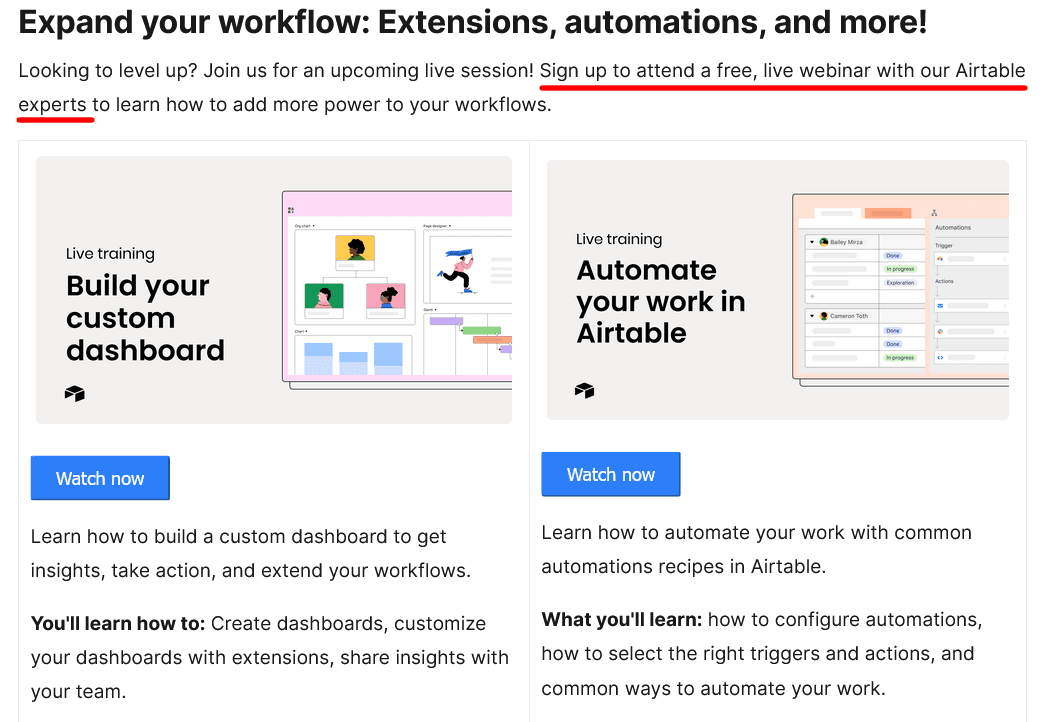
Source: Airtable
That sort of interaction with customers can also be very beneficial for the company.
It’s essentially a live advertisement for the product, but without the parts where the company representative tries to convince the customer to buy it.
Educational webinars can highlight all the best parts of the product for your customers.
As Margaret Magnarelli, marketing and communications expert, puts it, pushing the product on a customer is outdated anyway.
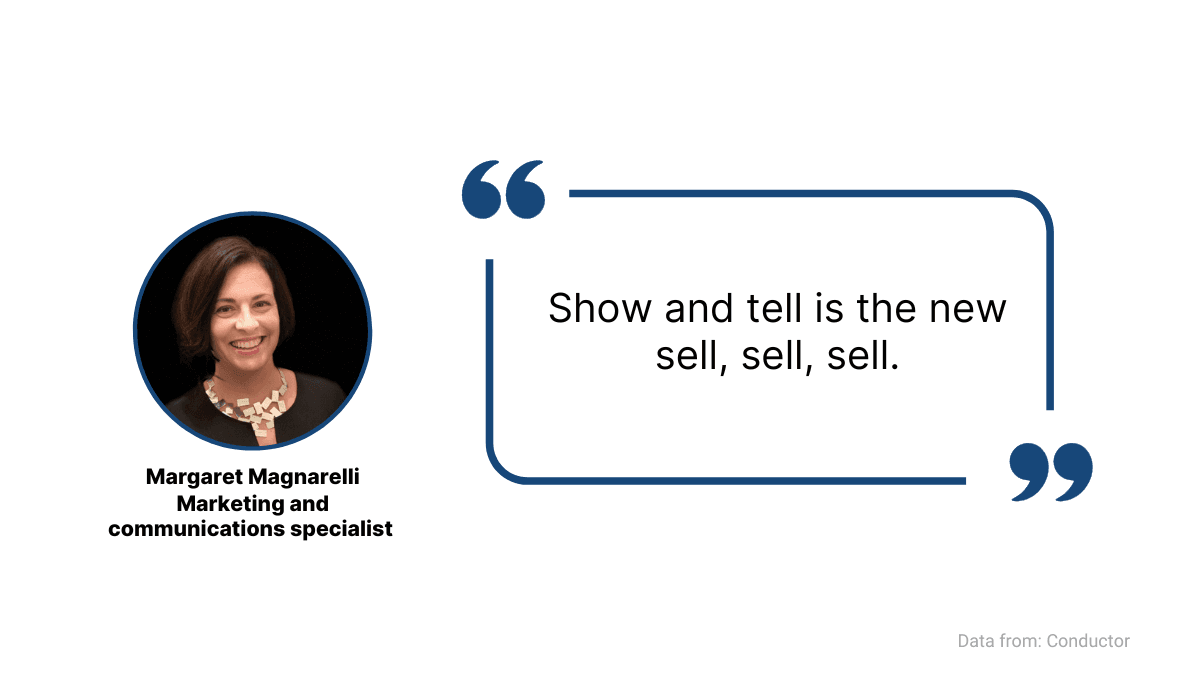
Source: Archbee
In other words, educating customers in a webinar can be as efficient as traditional marketing techniques.
At the same time, customers can see the product in action and see for themselves that it’s just the solution they need.
Build a Comprehensive Knowledge Base
Building an exceptional customer education program requires creating a lot of educational material.
And while some of the ways to educate your customers are more hands-on, like webinars, which we discussed in the previous section, you should also find a way to provide customers with how-to guides, step-by-step instructions, video tutorials, and all the other content they can learn from independently.
Creating a detailed knowledge base that can store all that information in a structured and easily accessible way is the way to accomplish that.
For that, you should choose a documentation tool that makes it easy to create content, maintain it, and publish it, all while being user-friendly for your customers.
For example, you can use Archbee, which is brimming with useful features for creators and consumers of educational content.
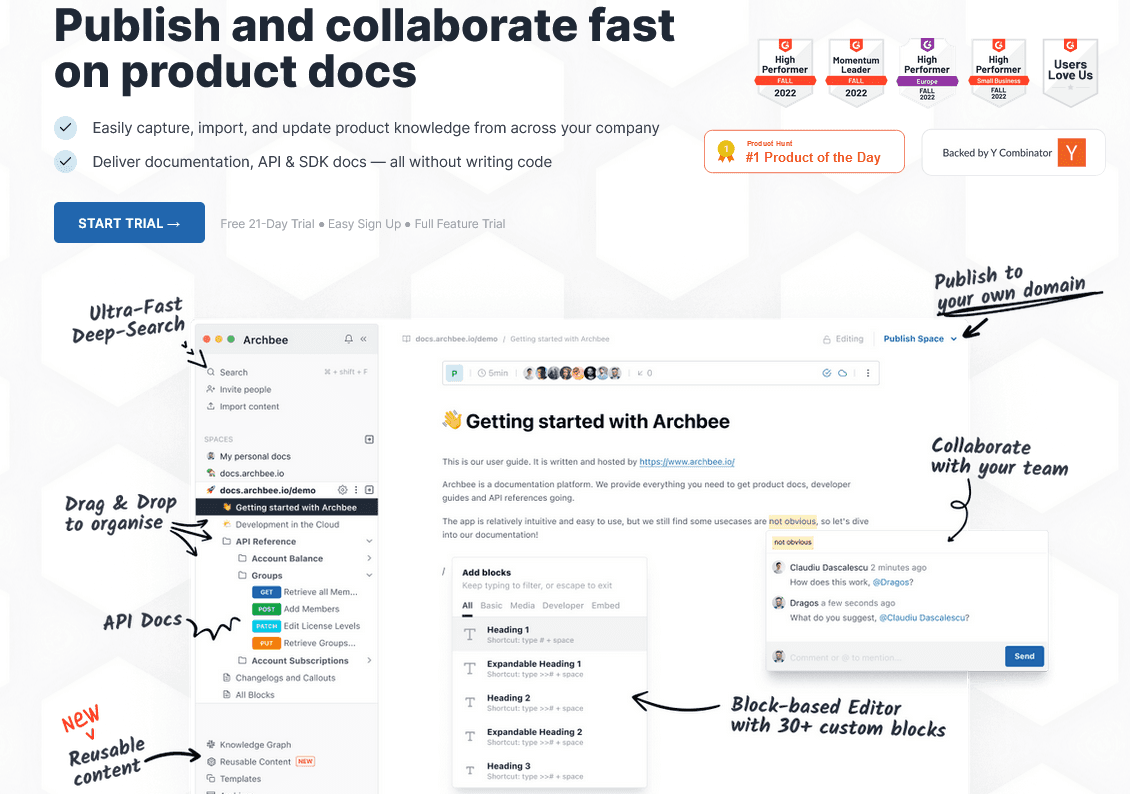
Source: Archbee
One company that built its knowledge base in Archbee is Storj, a cloud storage platform.
They created a homepage where customers can visit specific sections to access the information they need.
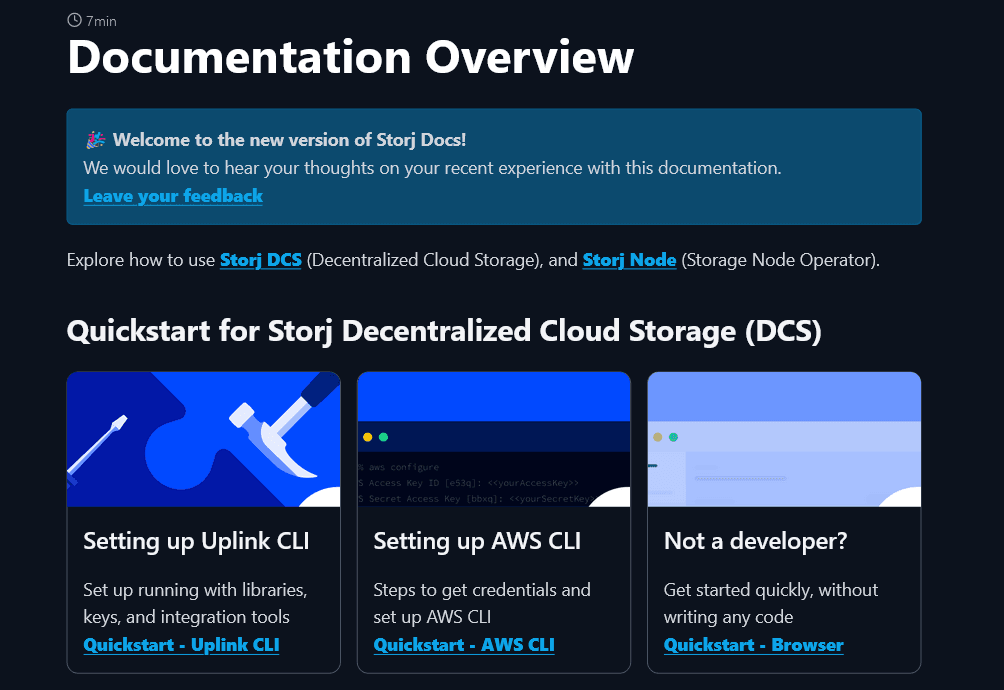
Source: Storj
Furthermore, customers can find their way around the knowledge base with the help of tabs with categories on the top and a table of contents.
And as if all that wasn’t enough, there’s a robust search function for finding any piece of content in the knowledge base.
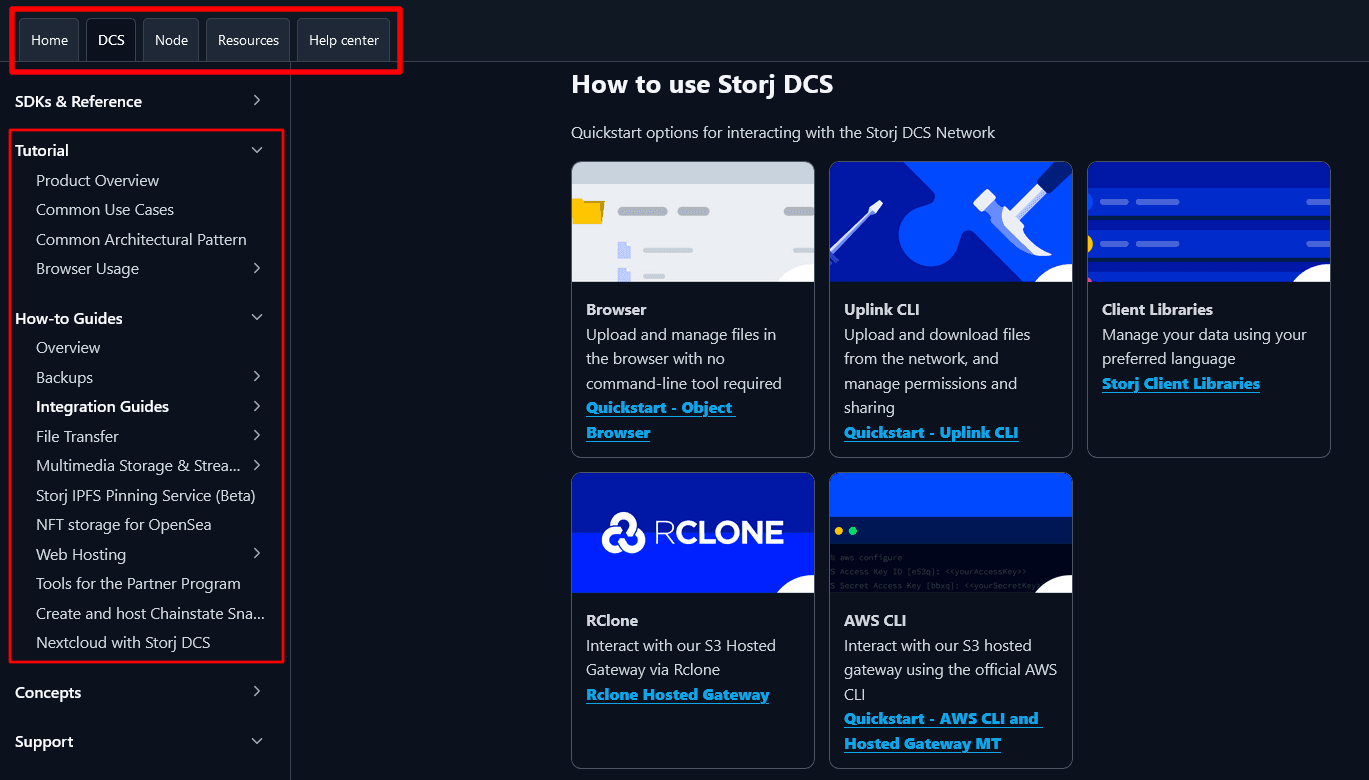
Source: Storj
Having a comprehensive knowledge base like that is a sign that you take the education of your customers seriously.
By giving them access to everything they need to know about the product, you place the responsibility of learning in their hands. That is something most of them will appreciate.
Use a Learning Management System
In the previous section, we’ve mentioned a knowledge base as a solution to provide a centralized place for most of your educational material.
But what if you want a platform that offers even more?
We’re talking about a Learning Management System (LMS).
Here’s how Reanna Mardinger, a former Global Director of Marketing Communications at an LMS company Docebo, defines it:
A Learning Management System (LMS) is a software-based platform that streamlines the management, delivery and measurement of an organization’s corporate eLearning program.
That means that with an LMS, you can organize all of your educational content in one place.
For instance, on one platform, you can provide the following:
- Video tutorials
- Webinars
- Quizzes
- Online courses
- Guides
- Whitepapers
- Blog posts
You get the picture—regardless of the format, every piece of educational content can be on an LMS platform.
There are many LMS solutions to choose from. One of them is iSpring.
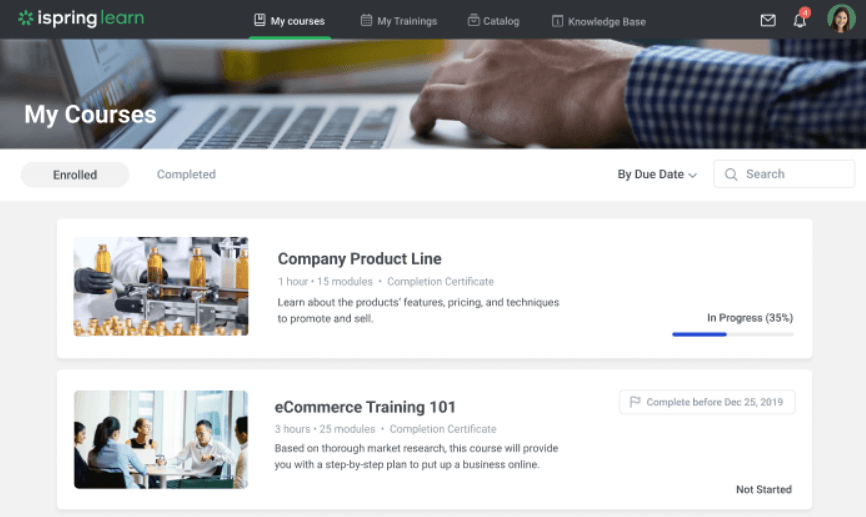
Source: iSpring
One of its many features is tracking your customers’ progress while they move through their education.
You can generate different types of reports that allow you to see how your customers perform, what courses they are taking, and whether they are successful.
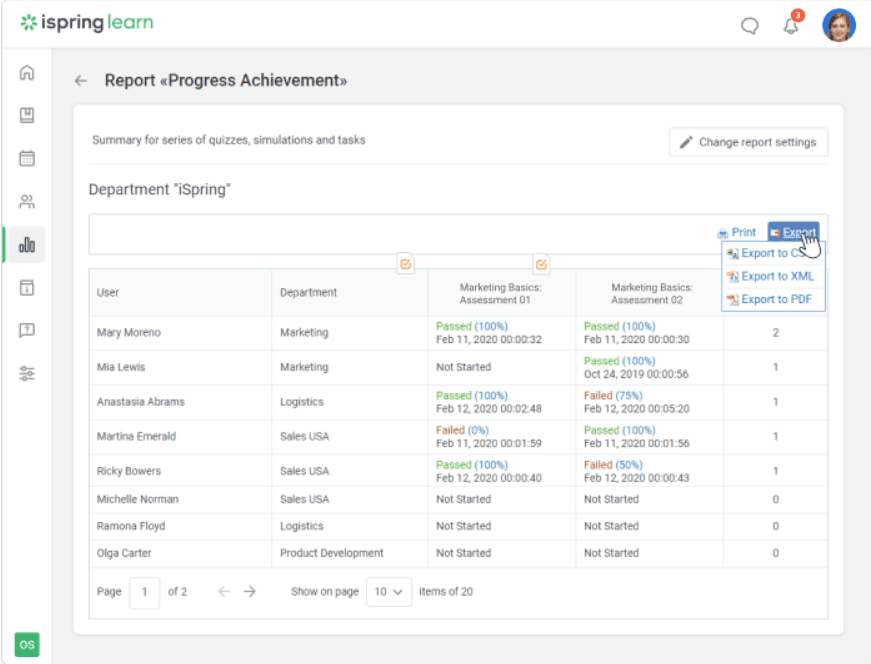
Source: iSpring
Using an LMS allows you to combine many elements of an exemplary customer education program.
Having one place for everything can simplify learning for your customers, as well as tracking their success and improving your content as needed.
Conclusion
If you have an extraordinary software product, don’t leave your customers to their own devices when it comes to using it.
That would be a waste of effort, time, and resources for everyone who participated in creating the product.
Instead, educate your customers on how to get the most out of your product and offer them a top-notch experience.
That will set you apart from the competition and show your product in the best possible light.
Use the tips from this article, and you will soon see excellent results.
Try Archbee's full range of features with our free 14-day trial.
Frequently Asked Questions
A strong education program speeds up time-to-value, helps customers master key features, and boosts overall product adoption. That translates into lower churn, higher renewal rates, and more expansion revenue as users discover advanced capabilities. You’ll also see fewer support tickets and shorter resolution times because customers can self-serve. Over time, educated users become brand advocates who share wins, provide richer product feedback, and bring in referrals—creating a healthy, compounding growth loop.



